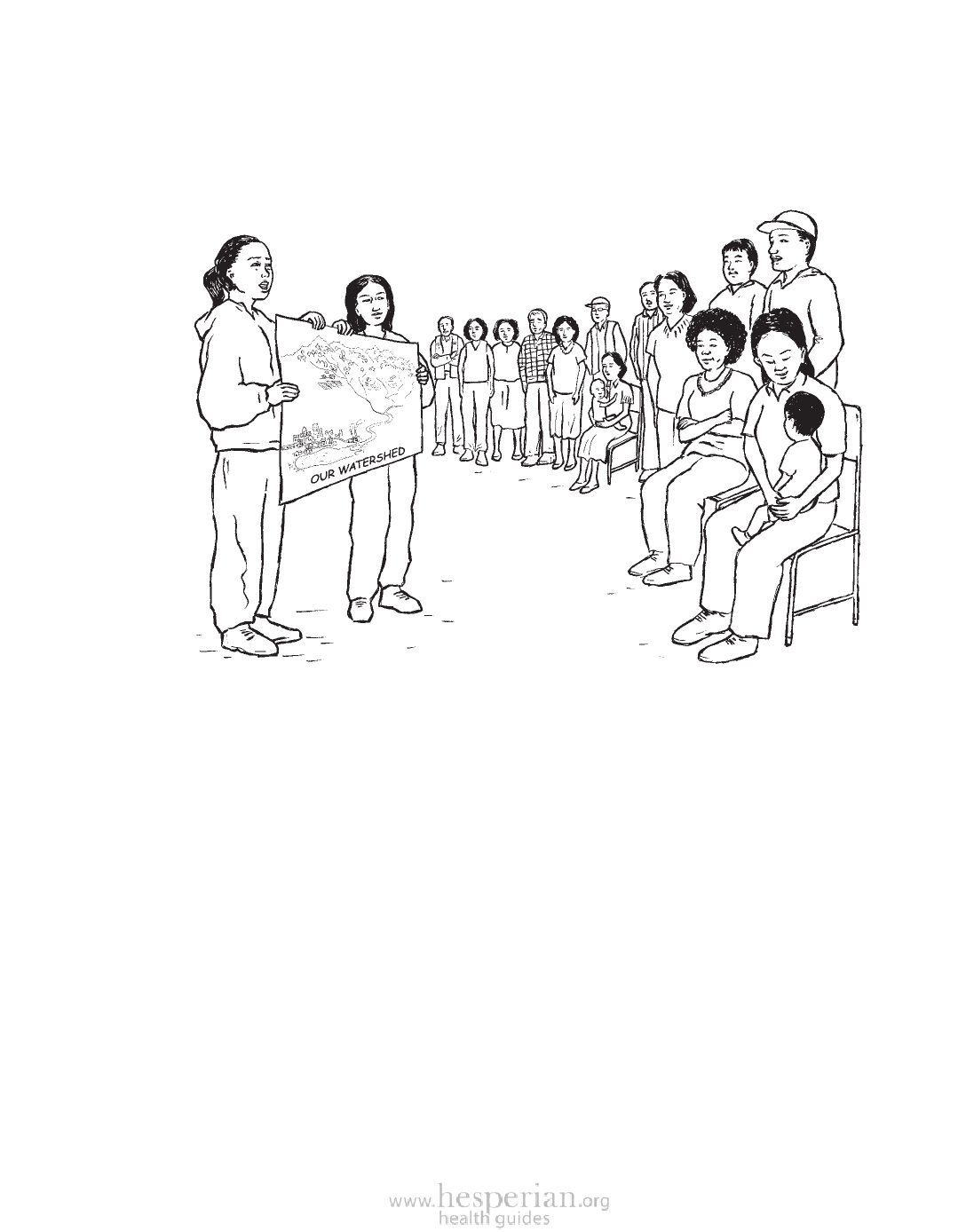
155
Protecting Watersheds
No matter where you are, in a rural or urban area, you are in a watershed.
A watershed is an area of land where all the water from rain and snow drains
downward to a single body of water, such as a stream, river, lake, or wetland.
A watershed is also called a catchment, because the land uphill and upstream
“catches” all the water and then the water runs downhill and downstream.
A watershed can be very large, covering thousands of kilometers of land,
or it can be as small as one valley. Within each large watershed where water
flows from high hills to low valleys (such as a whole range of mountains) there
are many smaller watersheds (such as the small streams and other waterways
that run down toward rivers and the sea). See the next page for drawings of
different sized watersheds.
A healthy watershed protects water supplies, nurtures forests, plants, and
wildlife, keeps soil fertile, and supports self-reliant communities. Large and
sudden changes to a watershed, such as clearing trees and brush, dumping
waste, or building roads, houses, and dams, can damage the watershed and
its water resources. This can affect the land’s ability to support healthy
communities, and lead to health problems, hunger, and migration. Planning for
changes in how water flows through watersheds, and how water and land will
be developed and used, can prevent future problems.